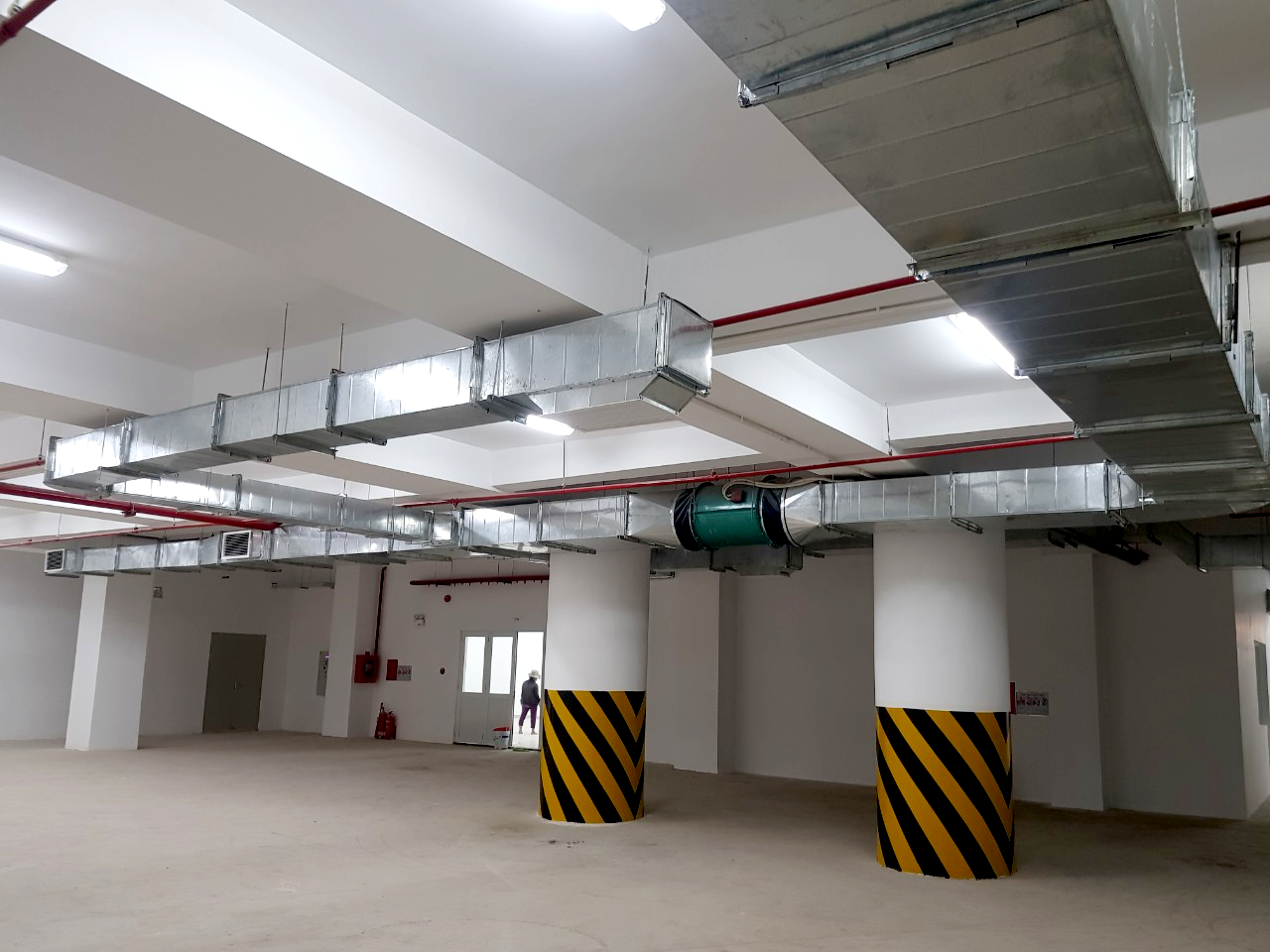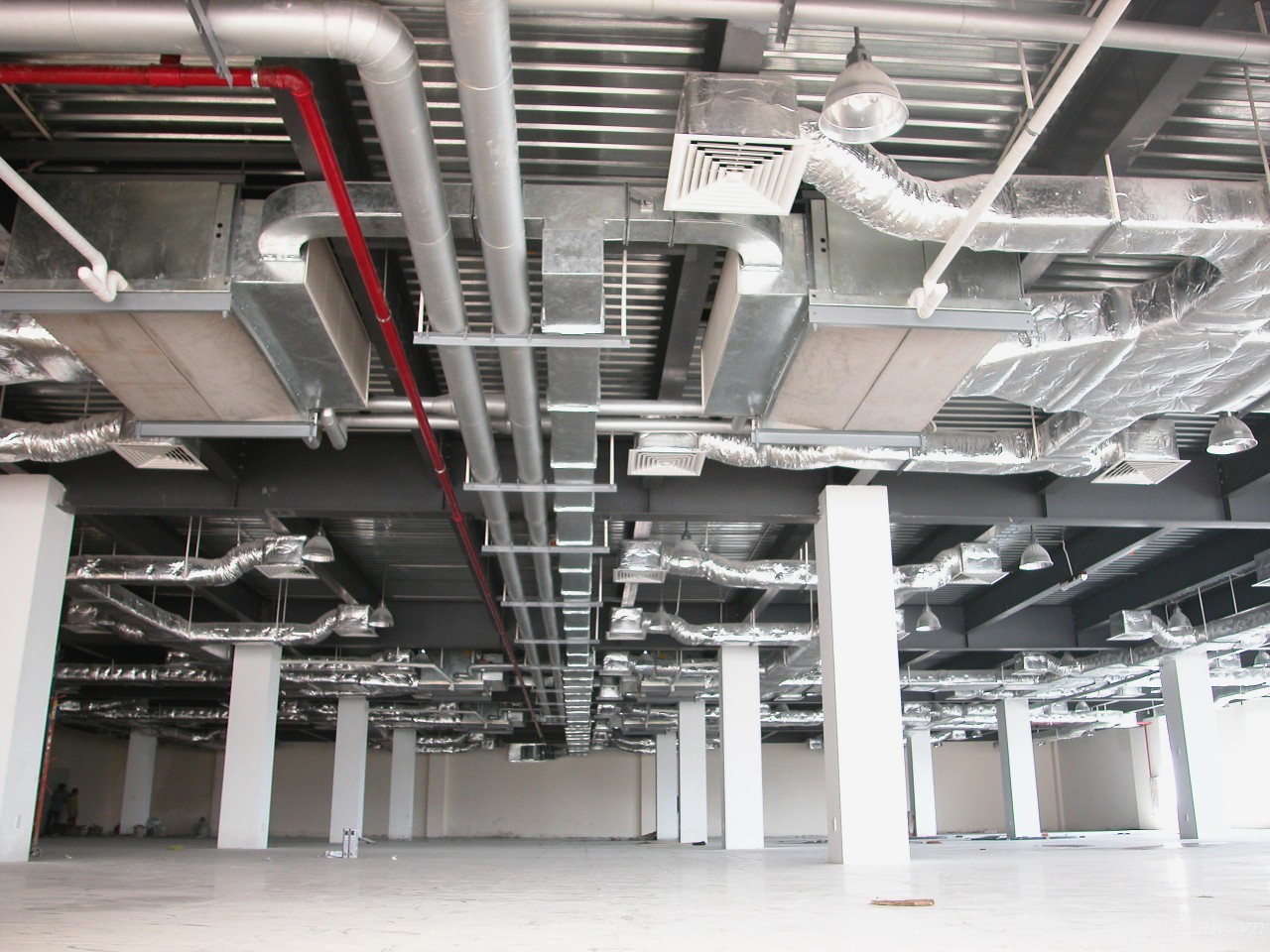Today P69 Company will share knowledge related to basement ventilation system. Currently, commercial centers, high-rise apartment buildings, hotels, entertainment places all have basements to serve the parking needs and other needs of people. Therefore, basement ventilation is extremely important.
What is basement ventilation?
Floor ventilation is the exchange and circulation of air between the inside of the basement and the outside. They help create air regulation, the air becomes airy, provide oxygen to ensure human activities, reduce the load of CO2 emitted from vehicles.
Uses of designing ventilation systems for basements
Basements at commercial centers or amusement parks are designed with the purpose of being a space to store vehicles for customers. With a closed design, limited space, so the basement is not immune to the influence of vehicle smoke, during the process of moving in and out in the basement.
In addition to the negative effects of dirt, a number of other emissions are also released into the environment. That has a big impact on human health. Therefore, the installation of a ventilation system for the basement is a correct solution used by many units.

- Remove harmful gases such as CO2, SO2 and other dirty gases. At the same time bring in fresh air from outside to make the air cleaner and cooler.
- Create a fresh atmosphere in the working environment. Improve the health of workers.
- More specifically, it is fire prevention or control when there is a fire.
- Using an exhaust fan also saves costs when using an air conditioning system or a cooling fan. Low noise, convenient, suitable for use standards as well as climatic and economic conditions of Vietnam.
Notes when installing the basement ventilation system
The basement ventilation system needs to be carefully calculated and planned before implementation. Ensure the optimal design plan and bring the most effective. Here are some notes before installing a basement ventilation system.
1. Calculation of required air flow
Install a ventilation system to keep the space well ventilated. Therefore, before construction, it is necessary to calculate the air volume to be exchanged. Calculate the volume of basement space. Calculate the required air flow to supply and air circulation speed. After knowing the wind flow, design appropriate and scientific technical drawings.
When designing, it is necessary to pay attention to the size of the vents, the distance of the vents so that it is reasonable. Usually the air inlets and air supply are arranged on the basement floor. The distance between the doors of the air inlet/air supply branches is from 3 to 6m. So that the air supply can be distributed to the required areas.
The vent area depends on the previously calculated air flow. Calculate the wind speed from 1 to 3m/s to ensure low noise.
2. Selection of construction and installation locations
To ensure sufficient air supply for the entire space. And can suck out dust, heat thoroughly. The choice of installation location is very important. Requires the system designer to calculate the location of the fan, duct, and air outlet so that it is reasonable.
It is not recommended to design and install industrial fans in locations where many people pass by. The fan should be installed higher or lower than the head, avoid placing the fan in the head-level position. Because the suction and blowing force from industrial fans is very strong, causing discomfort and affecting human hearing.
3. Make sure the power supply is stable
The technician needs to calculate the amount of electricity consumed and the required operating power of the system. Make sure there is an alternative power source so that the system can operate continuously even in the event of a power failure.
Guidelines for the design of ventilation systems for basements
In order for the basement ventilation system to achieve the highest efficiency, it is necessary to analyze and design the most suitable basement ventilation system.

Here are 4 steps to designing a ventilation system for the basement.
1. Step 1: Topographical Survey
Conducting surveys is indispensable for every system. The implementing unit needs to learn carefully about the structure such as area, height, infrastructure system … to have a suitable installation plan.
2. Step 2: System design, installation location
After having the implementation plan, it is necessary to conduct an overview system design. Show the expected installation location of ventilation equipment, air pipelines, etc.
3. Step 3: Calculate wind flow, pressure
Based on the parameters and the installation location, one needs to calculate the wind flow and loss head. This step is very important, because it affects the efficiency of the system. Besides flow, head, it is necessary to calculate in detail the number of feeders and suction, air mouths..
4. Step 4: Select the right device
Based on the calculated parameters, select suitable equipment, ensuring those criteria. Each type of industrial fan product often has different parameters. Therefore, when installing, it is necessary to choose the right equipment by carefully studying and reading the specifications of each product.
What basement ventilation options are there?
Some basement ventilation options most often chosen by investors today include: Natural ventilation and mechanical ventilation. Specifically:
1. Natural ventilation
Natural ventilation is applied in the basement with a special air intake window in a large building. These windows are capable of opening and closing at will, evenly spaced, facing each other in the direction of the natural wind to catch the wind in the best way.
2. Mechanical ventilation
Mechanical ventilation is also known as forced ventilation. Simply put, through the use of industrial exhaust fans in combination with ventilation systems and air vents to create ventilation gaps. However, the system capable of sucking or both supplying and sucking air will be affected by the basement structure and the cost of the building owner.
The principle of operation of the ventilation and cooling system for the basement
The exhaust fan will suck the dust and harmful gases in the basement and discharge it to the outside through the pipeline. When the exhaust fan sucks in air, because in the closed cellar, there is a main pressure difference so the outside air will be sucked in to balance the air volume. According to this principle of operation, the air in the basement is always changed.
Choose the right basement exhaust fan
As mentioned above, the selection of equipment is extremely suitable. They contribute to the efficiency of the basement ventilation system. Currently, there are popular types of fans installed for basements as follows:
1. Jetfan ventilation fan
Jetfan is a specialized fan for basement ventilation. They have the effect of repelling the wind to help bring out hot gases, dirt, and harmful gases in the basement. With 2 sound-absorbing heads, the jetfan fan operates smoothly without affecting other activities.
2. Axial fan
Axial fans are the most popular industrial ventilation fans today. They have the effect of ventilation, cooling and air circulation. Suitable for installation in basements. With large flow, axial fans have the ability to cool large spaces.
3. Centrifugal fan
Industrial centrifugal fan has a strong suction ability to help clean up dust and harmful air in the space. Suitable for use in industrial parks, factories, places where a lot of dust, toxic gases are generated. They can also be used for basements.
Contact us today for a free consultation and answer at:
Contact information P69 – M&E Contractor
Address: No. 6/165C Xuan Thuy, Cau Giay District, Hanoi
Website: https://p69.com.vn/
Hotline: 02422121212 – 0965937799
Email: kd@cokhip69.com.vn
Facebook: https://www.facebook.com/p69nhathaucodien
LinkedIn: https://www.linkedin.com/in/congtyp69/
Youtube : https://www.youtube.com/channel/UCOUwCnE5iGj8iqe_ZIUM7oA

